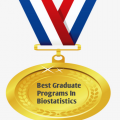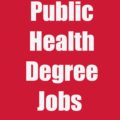The public health field contains a variety of opportunities for individuals interested in promoting good health practices and educating communities on how to care for themselves. On the front lines, you’ll find health care services managers or community health workers, but it’s equally busy behind the scenes. Working to collect, analyze and present vital data that instructs other public health officials, and biostatisticians to help determine what issues require attention or pose a critical risk to the overall well-being of a population.
Biostatistics is an innovative field that involves the design, analysis, and interpretation of data for studies in public health and medicine. Biostatistics experts arrive at conclusions about disease and health risks by evaluating and applying mathematical and statistical formulas to the factors that impact health.
Biostatistics has long played an integral role in medicine. It is integral in the development of public health strategies as it helps researchers make sense of data collected in medical trials or studies on treatment efficacy. Used extensively within epidemiology, this type of data can help medical professionals determine how diseases develop, progress, and spread. The flu, for example, is typically different every year, yet medical professionals and public health officials often make predictions about which areas have the highest risk or what symptoms to expect. This foresight is influenced by biostatistics, which can even help forecast flu mortality rates and what time of year people are more likely to get sick.
In addition to using data related to infectious and non-infectious diseases, biostatistics and epidemiology often converge to address situations related to environmental exposures, injuries, natural disasters, and terrorism.
Handling the data — The career of a Biostatistician
First and foremost, a biostatistician job description will likely require the ability to manipulate biostatistics. In this role, individuals apply statistics to medical and public health research, often designing studies to help influence how organizations gather and analyze data. They can conduct statistical analyses on their own or work with a scientific team to establish appropriate methods for statistical design.
Once a study is complete and data has been appropriately collected, a biostatistician assists in interpreting the information to prepare comprehensive reports for professionals in the public health field. The reports can also be presented to the public, so it’s important they are written with a variety of audiences in mind. Additional daily tasks for a biostatistician include:
Offering statistical training for clients
Managing personnel in a team
Mentoring or training employees
Establishing professional relationships with clients
Biostatisticians can also be called upon to assist with grant applications or any other documentation where succinct, factual knowledge can support a medical position.
How to become a biostatistician
Many hiring managers will look for candidates with an advanced degree to be eligible for an opportunity in biostatistics. Generally, a master’s or doctoral degree in biostatistics or a relevant field, such as public health, is preferred. In addition to the right educational background, those thinking about becoming biostatisticians should exhibit strong analytical skills, thorough attention to detail, and the ability to work both collaboratively and independently.
One way to pursue an applicable advanced degree is through top-ranked Master of Public Health programs which offer courses in the core curriculum as well as within the epidemiology concentration to help prepare students for a career in biostatistics.
Biostatistics in Public Health, a course within the core curriculum of the online MPH, teaches statistical modeling techniques to help students learn how to effectively analyze data to meet scientific objectives. Throughout the course, students practice common methods for analyzing data as well as how to adequately communicate the results. Additionally, they review published journal articles to look at actual examples of biostatistics use, evaluating their effectiveness.
Upon selecting the epidemiology concentration, one of three options in the online MPH, coursework advances to more in-depth coverage of biostatistical principles and how they apply within this area of public health. Through descriptive statistics, stratified analyses, regression, and other basic approaches, the concentration provides opportunities for students to learn more advanced biostatistical methods.
Pursuing a career in biostatistics requires public health knowledge as well as experience analyzing and understanding data. The online Master of Public Health is one option that combines valuable information with an applicable skill set to pursue biostatistician opportunities.
Biostatistician Careers in Public Health
There are many public health careers available to those with a background in biostatistics. These include, but are not limited to staff epidemiologists, medical technologists, program analysts, statisticians, and science officers.
The field of statics is experiencing a growth rate of 14 percent, according to the U.S. Bureau of Labor Statistics, and those working in the field typically make an average annual salary of $72,830. Biostatisticians funded by the government find great levels of job security in the public health field, and studies show that 20 percent of biostatistician positions filled are with the federal government. The Department of Health and Human Services is just one example of a federal agency that employs biostatisticians.
Local and state governments need biostatisticians, as well, and colleges and universities require individuals in the profession, too. Private industry jobs find most biostatistician positions in scientific research and development, but public health remains the real growth area.
Career Outlook for Biostatisticians in Public Health
Though the Bureau of Labor Statistics does not collect data only on biostatisticians, it does collect data on the overall outlook of statisticians, and opportunities for advancement in this profession abound.
The government continues to work on programs to enhance data and its availability to the public. As this happens, biostatisticians can expect to participate. Many new initiatives are taking place in national health care, and the demands for change in the current health care system create a consequent demand for biostatisticians and their expertise. The Department of Health and Human Services represents nearly one-fourth of all federal outlays, and the National Institutes of Health supports more than 38,000 projects nationwide. Similarly, local- and state-level agencies track health-related trends, which translates to even more opportunities for biostatisticians. Best Biostatistics Graduate Programs
Academic Requirements
Before applying to a biostatistics program, you should have a broad knowledge of biology and a solid understanding of mathematics and statistical methods and measures. However, this is not required of all schools and programs in this area of study. You can search for schools in this field and sample courses on the Association of Schools & Programs of Public Health’s (ASPPH) website. SOPHAS is the centralized online application service for students applying to a school or program of public health accredited by the Council on Education for Public Health (CEPH). A complete list of accredited schools and programs can be found on the CEPH website. See Best Schools for Masters In Public Health (MPH) in Canada






